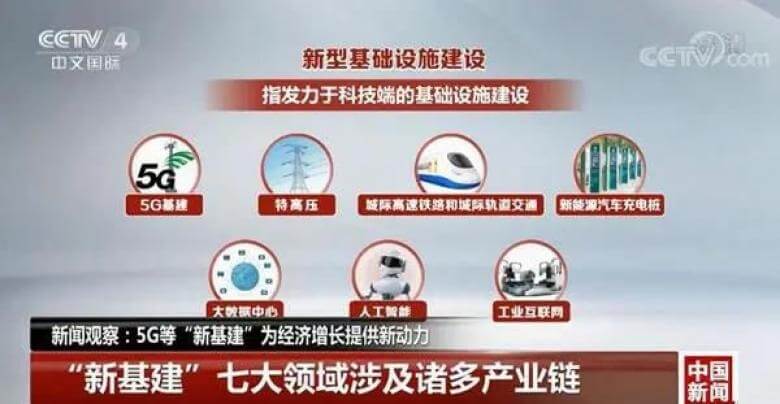What is the new package?
On March 4, the Standing Committee of the Political Bureau of the Communist Party of China (CPC) decided to speed up the construction of major infrastructure projects. As the new stimulus package, it focuses on technologies that promote sustainable infrastructure. For instance, energy-saving appliances, charging piles for electric vehicles and 5G technologies are included in the package.
The following table shows the details of major projects in different provinces of China in 2020:
| Province | Quantity of projects | Overall investment | Annual investment | Details |
| Beijing | 300 | – | 252.3 billion | Include 100 infrastructure projects, 100 livelihood improvement projects, 100 Hi- tech industries projects. |
| Shanghai | 212 | – | – | Include 42 technical industry projects, 25 livelihood projects, 12 ecological civilization projects, 57 infrastructure projections, 16 urban- rural integration projects. |
| Henan | 980 | 3.3 trillion | – | The key topics include industrial transformation, infrastructure construction, new urbanization, environment protection and social development. |
| Chongqing | 924 | 2.7 trillion | 340 billion | The key topics include rural revitalization, infrastructure construction, industrial, social and regional coordinated development. |
How will the package promote sustainable infrastructure?
Digitalization and artificial intelligence are the two key pillars of these new projects promoting sustainable development, which will deeply influence the industrial parks and economic zones. Following this package and benefitting from the advanced technologies, state- level economic development zones are trying to save energy and reduce waste by improving management and technology system.
“Green development” is the key point of the state- level economic development zones. Through some new information platforms, a variety of data can be easily integrated, supervised and analyzed. In terms of environmental and energy data, it is necessary to consider how to reduce the physical contact between people and between people and wastes. With the help of technology, all data can be uploaded and integrated into “one cloud”. The waste emitters (i.e., industrial enterprises) can directly contact with waste administrators (i.e., recycling enterprises), so as to maximize the utilization value of waste and minimize the disposal cost. By making the information more transparent, managers of the zones can supervise the whole process. The resource consumption and cost will be reduced.
Several cities have already taken actions, and this time the new package will accelerate the process. In 2010, Tianjin tried to carry out online connection between enterprises producing industrial solid waste and those recycling waste. In Suzhou, through distributed energy and the establishment of online platforms, the Moon Bay Energy Center in Suzhou industrial park has already saved energy and reduced emissions. Beijing has applied to join the pilot construction project of “waste- free city” in 2019. Through the full life- cycle digital management of industrial solid waste, Beijing realized the automatic information identification.
In the future, the “big data center” of economic development zones may also include the database of different segment of clean technology. The clean technology enterprises can provide infinite possibilities for green transformation and high- quality development of the zones through big data analysis.
The new development of charging piles for NEV and ultra- high voltage under new stimulus package
Charging piles for New Energy Vehicle
NEV refers to the vehicle that use unconventional vehicle fuel as the power source. It includes hybrid electric vehicles (HEV), battery electric vehicle (BEV), fuel cell electric vehicles (FCEV) and other new energy vehicles. The unconventional vehicle fuels are the fuels that exclude gasoline, diesel, natural gas, liquefied petroleum gas, ethanol gasoline and methanol.
As the part of the new infrastructure, the charging pile is based on the good prospect of China’s new energy vehicles. Under the consensus of energy and environmental conservation, new energy vehicles have become the trend of auto industry. In 2019, the value of China’s new energy vehicle market exceeded 3.81 million RMB, accounting for 49% of the global market share. China has the largest electric vehicle market in the world, and the charging pile is the essential replenishment infrastructure of electric vehicle. Therefore, the market scale for charging infrastructure is huge.
By the end of 2015, there were only 57,000 public charging facilities in China, which has already increased to 1.219 million by 2019, and the vehicle pile ratio has raised from 7.84:1 in 2015 to 3.1:1 in 2019. In 2020, the ratio should be 1:1.
On April 13, Cai Ronghua, the deputy director of the industrial development department of NDRC announced that around 10 billion RMB will be invested to the construction of charging piles in 2020. At the end of the year, there will be 200,000 new public piles and 400,000 new private piles. Among them, the State Grid Corporation will invest 2.7 billion for the projects in Beijing, Tianjin, Hebei and other total 24 provinces. Those charging piles will be used in different scenarios, like public, private, logistic, sanitation, community and shore power. It is expected to boost the consumption of new energy vehicles by more than 20 billion RMB.
Ultra- high voltage
Ultra-high voltage is a key factor in the construction of energy internet and the security of energy supply. Recently, the State Grid Corporation of China has set a total 112.8 billion RMB investment scale in 2020 for the construction of ultra-high voltage.
In China, more than 80% of coal, hydro, wind and solar energy resources are distributed in the western and northern regions, and more than 70% of electricity consumption is concentrated in the eastern and central China. The differentiation of supply and consumption regions indicates that China should further develop new energy to ensure the energy supply.
Because the power generation by wind, solar and other new energy is randomness and volatility, it is necessary to establish an energy internet to support the development, distribution and utilization of the energy.
Through the ultra- high voltage, the clean energy can be transported from the “Three North” area. With the help of large capacity pithead power station, northern China can transmit the electricity to other provinces instead of the coal, which is conductive to the protection of environment.





